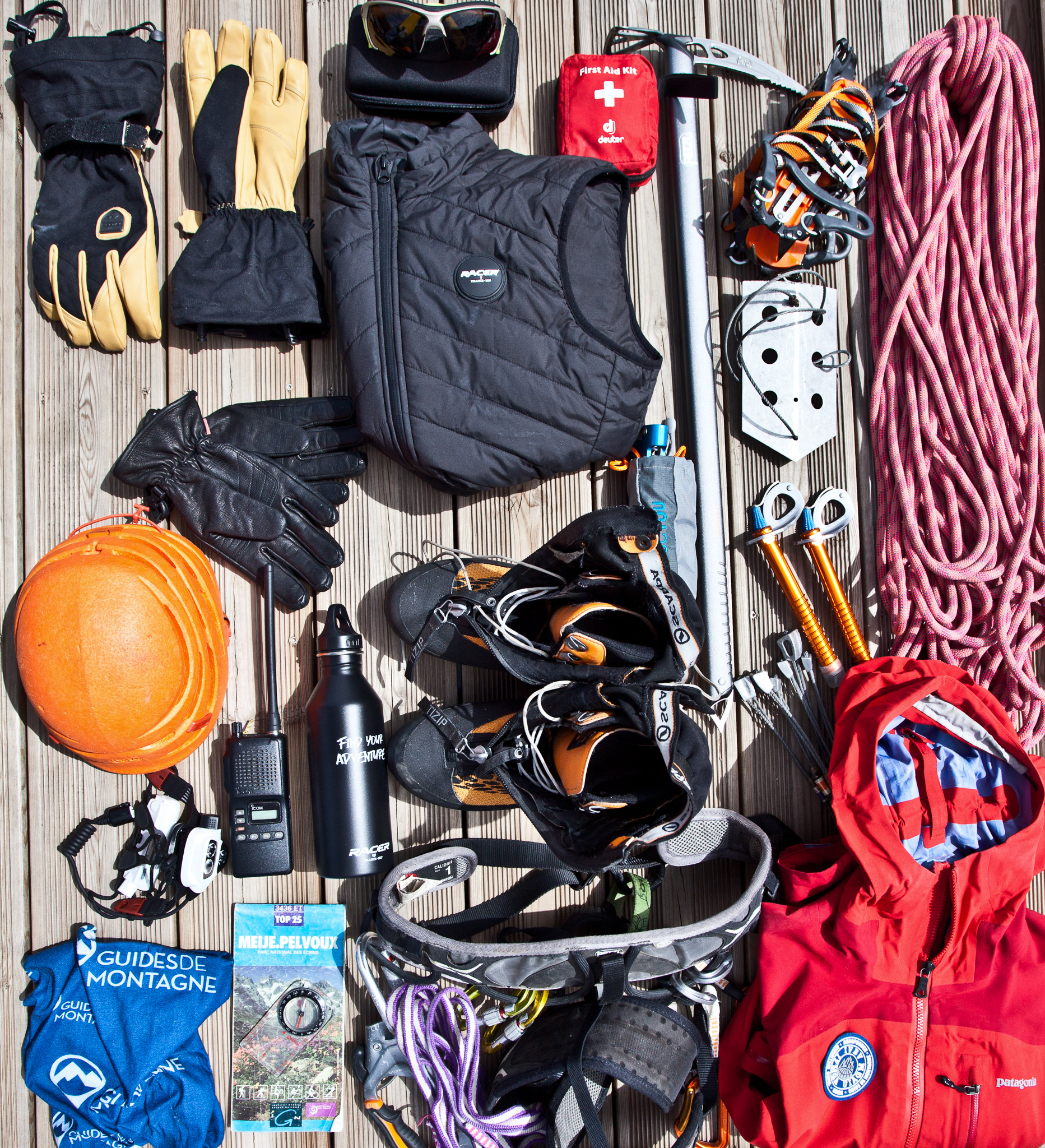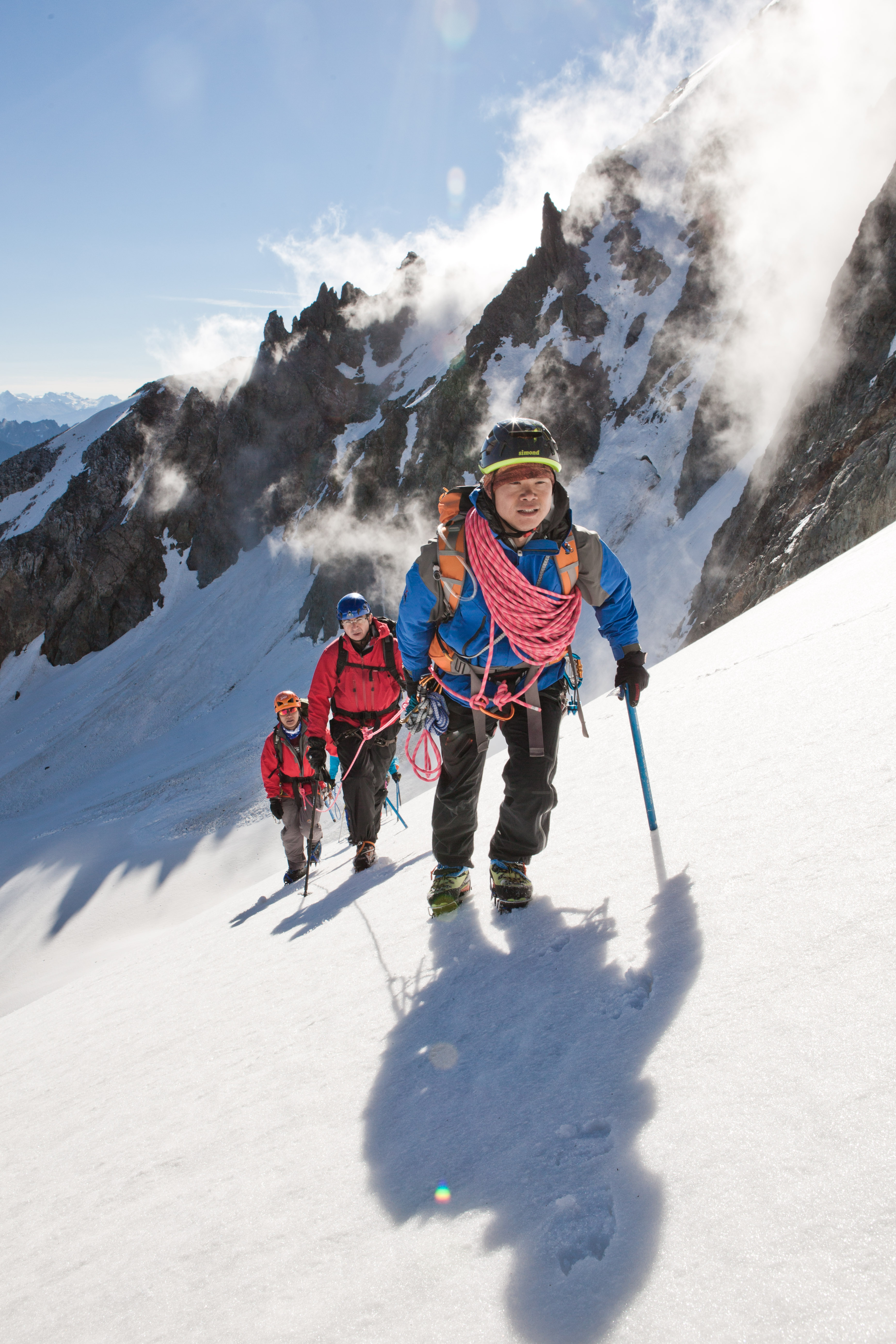After near two months of being locked inside due to Covid and social distancing, the mountains are calling us!
Soon it will be the summer alpine climbing season kick off.
First of all,
Carefully check all information available about the snow, rock and ice conditions, the mountain access and the current regulations in the targeted mountain ranges.
Check the weather forecast and the best window for climbing. Warning: the predictions can be seriously affected by the lack of air traffic. Less planes in the sky means less data for the meteorologists.
Choose a mountaineering route that fits your ability and experience. Consult guidebooks and websites. Set up backup plans …Alpine climbing requires adaptability and flexibility. Don’t hesitate to change the original plans if the conditions aren’t there.
Go with an experienced partner or hire a guide or take a class.
http://www.guides-montagne.org
Get physically and mentally fit.
Review your navigation skills, staying on the route is crucial for your own safety and also for other parties safety. Maps, compass and altimeter can be very useful as smartphones and apps are not 100% reliable.
What goes in a Guide’s pack for a classic Alpine route?
Climbing equipment
Rope, harness, helmet, ice-axe, crampons, carabiners, slings, ice-screws, few quickdraws, a set of stoppers, a crevasses rescue kit and perhaps snow anchors if you are going across steep slopes of snow.
If you crampons are dull, sharpen them at home! Same applies to the other ice tools.
A good backpack must fit well onto your back, usually within the 35-50 liters range, depending on the climbing type and the time you are planning to spend in the mountains.
Clothing
Check your boots, inner soles and ventilate them if needed.
Take all the proper layers for alpine climbing, base layers, mid-layers and waterproof jacket/ pants. A good pair of gloves and socks as well as a hat and a cap.
Tip : It’s easy to accidentally loose a glove in the mountains, I always bring over an extra pair. Your hands are your key tools for climbing and belaying, protect them well.
Tip : Even if the weather forecast doesn’t say it will be cold, I always bring over a light down jacket or vest. That could save your night if an unexpected bivouac is needed for safety reasons.
Other items: sunglasses, sunblock and waterproof pocket to keep your smartphone, credit card, ID papers dry.
Must take: first aid kit!
With the current situation and probably lots of new restrictions to stay at mountain huts, you might need to bring bivouac equipment with you. Tent, sleeping bag, sleeping pad, stove and cooking sets, food, power bars or gel and healthy snacks.
Tip: dry fruits and nuts are awesome!
Extra gear:
Tip: trekking poles, they may seem like a luxury, but they take off added weight of your legs and knees, especially when descending.
As an IFMGA guide, I always bring an extra pair of sunglasses and a radio to call rescue in urgent situations on a specific frequency.
Tip: talk to local climbers or mountain guides, they are familiar with the area and the routes you want to climb.
Tip : facing the Covid-19 pandemic and social distancing, mask and hand sanitizers could be needed if you take a gondola lift, depending on the affluence. It will always be better to hike up and to pick a remote mountaineering route in order to avoid crowd.
Tip: bivouac might become the new trend for that coming summer season in the Alps.
Wilderness is priceless.
Have a safe climb and don’t hesitate to reassess the conditions and weather until the very last minute.
Climbing safety is under your own responsibility. No article can replace qualified training or experience.
Enjoy your climbs!



